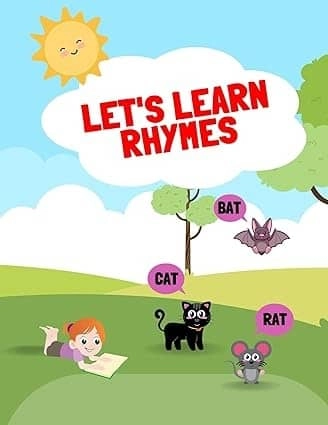
Music has always been a fundamental part of human culture, and its benefits extend beyond just entertainment. For early learners, engaging with music can be an essential part of their development, fostering skills in rhythm, language, and emotional expression. In “Sam’s Note Adventure,” we explore how musical play can enrich early childhood education, turning learning into a fun and interactive experience. Incorporating elements like playful rhymes—such as a Rhyme with bat—can enhance these musical activities, making them even more engaging for young children.
The Power of Music in Early Childhood
Enhancing Cognitive Development
Music has a profound impact on cognitive development in young children. Research shows that exposure to music can boost brain development, improve memory, and enhance problem-solving skills. Through rhythmic patterns and melodic structures, children learn to recognize and anticipate sequences, which helps build their cognitive abilities. Musical play encourages pattern recognition and sequencing, foundational skills that are crucial for later academic success.
Boosting Language Skills
Music also plays a significant role in language development. Singing songs and reciting rhymes help children with language acquisition by exposing them to new vocabulary and sentence structures. Rhythmic patterns in music aid in the development of phonemic awareness, which is the ability to hear and manipulate the sounds in words. This skill is essential for learning to read and write.
Interactive Musical Activities
Singing and Rhyming Games
One of the most effective ways to engage young learners with music is through singing and rhyming games. These activities not only entertain but also reinforce language skills and cognitive development. Songs with repetitive patterns and simple lyrics, such as those that include a rhyme with bat, are particularly effective. They help children predict what comes next in a song, improving their memory and comprehension skills.
Movement and Dance
Incorporating movement and dance into musical activities adds another layer of engagement. Children can dance to the rhythm of a song or follow along with simple choreographed moves. Movement helps children develop their motor skills and coordination while allowing them to experience music in a physical and dynamic way. Dancing to the beat also reinforces rhythm and timing, important components of musical education.
Instrument Exploration
Introducing children to musical instruments is another key aspect of musical play. Simple instruments like tambourines, xylophones, and maracas can provide hands-on experience with rhythm and sound. Allowing children to experiment with these instruments helps them understand the different elements of music, such as pitch, volume, and timbre. Playing instruments also enhances fine motor skills and hand-eye coordination.
Creating a Musical Environment
Incorporating Music into Daily Routines
Integrating music into daily routines can make learning and development a seamless part of everyday life. Singing songs during routine activities like getting dressed or cleaning up can make these tasks more enjoyable and less stressful for children. This approach not only helps establish a positive attitude towards learning but also reinforces routine through musical cues.
Building a Music-Friendly Space
Creating a space that is conducive to musical play can greatly enhance the learning experience. A designated area with musical instruments, comfortable seating, and space for movement encourages children to explore and engage with music. Having a variety of musical resources, such as books, songs, and interactive tools, ensures that children have access to diverse musical experiences.
Benefits Beyond the Basics
Emotional Expression and Regulation
Music provides a powerful outlet for emotional expression and regulation. Singing and playing instruments allow children to express their feelings and experiences in a safe and creative manner. Music can also be used to help children manage their emotions and develop empathy. By exploring different moods and themes through music, children learn to identify and understand their own feelings as well as those of others.
Social Skills Development
Participating in musical activities often involves group interactions, which can enhance social skills. Activities such as group singing or playing in a band teach children about cooperation, turn-taking, and listening to others. These social interactions are crucial for developing communication skills and building positive relationships with peers.
Resources for Musical Play
Musical Books and Apps
There are numerous resources available to support musical play in early childhood. Musical books that include songs, rhymes, and interactive elements can be a valuable addition to any learning environment. Additionally, educational apps that focus on music and rhythm offer interactive experiences that can complement traditional musical activities.
Community Music Programs
Exploring community music programs can provide children with additional opportunities to engage with music outside of the home. Many communities offer music classes, workshops, and performances designed specifically for young children. These programs can introduce children to a broader range of musical experiences and foster a love for music that lasts a lifetime.
Conclusion
“Sam’s Note Adventure: Musical Play for Early Childhood” highlights the incredible benefits of incorporating music into early learning. Through interactive activities, singing, dancing, and instrument exploration, children can develop cognitive, language, and social skills while having fun. Integrating music into daily routines and creating a music-friendly environment further enhances the learning experience. By embracing musical play, we not only enrich children’s educational journey but also foster a lifelong appreciation for the joys and benefits of music.